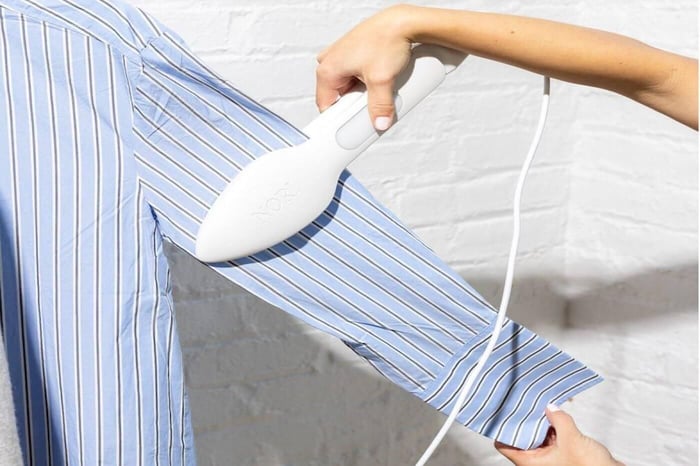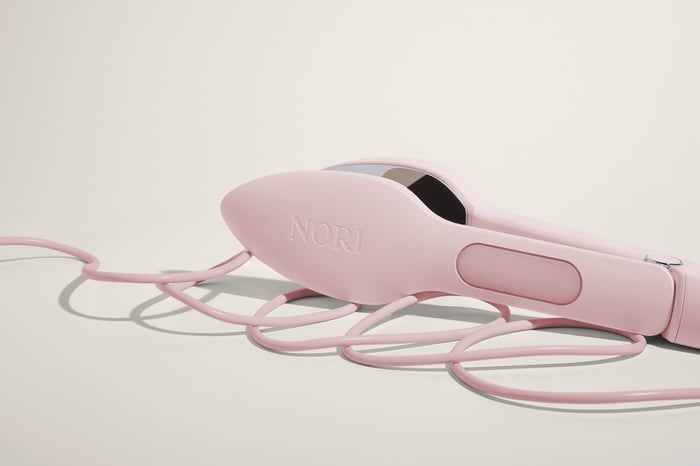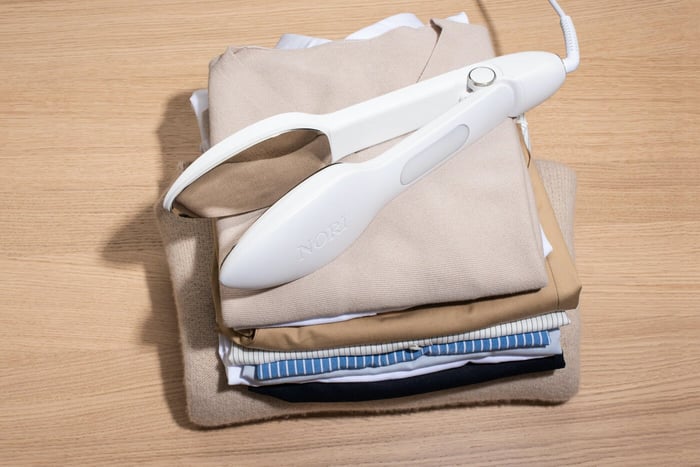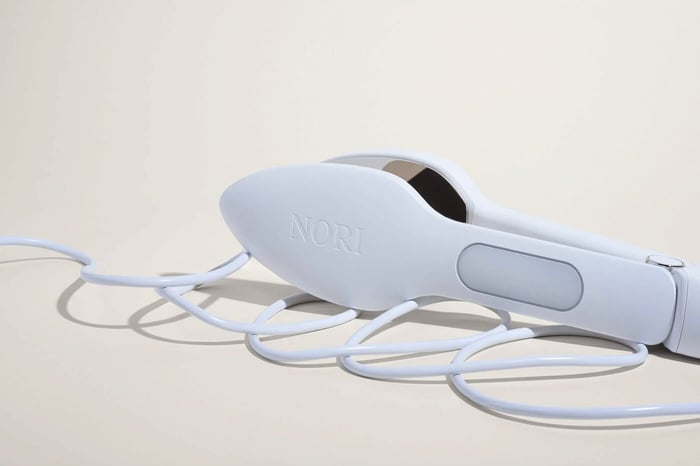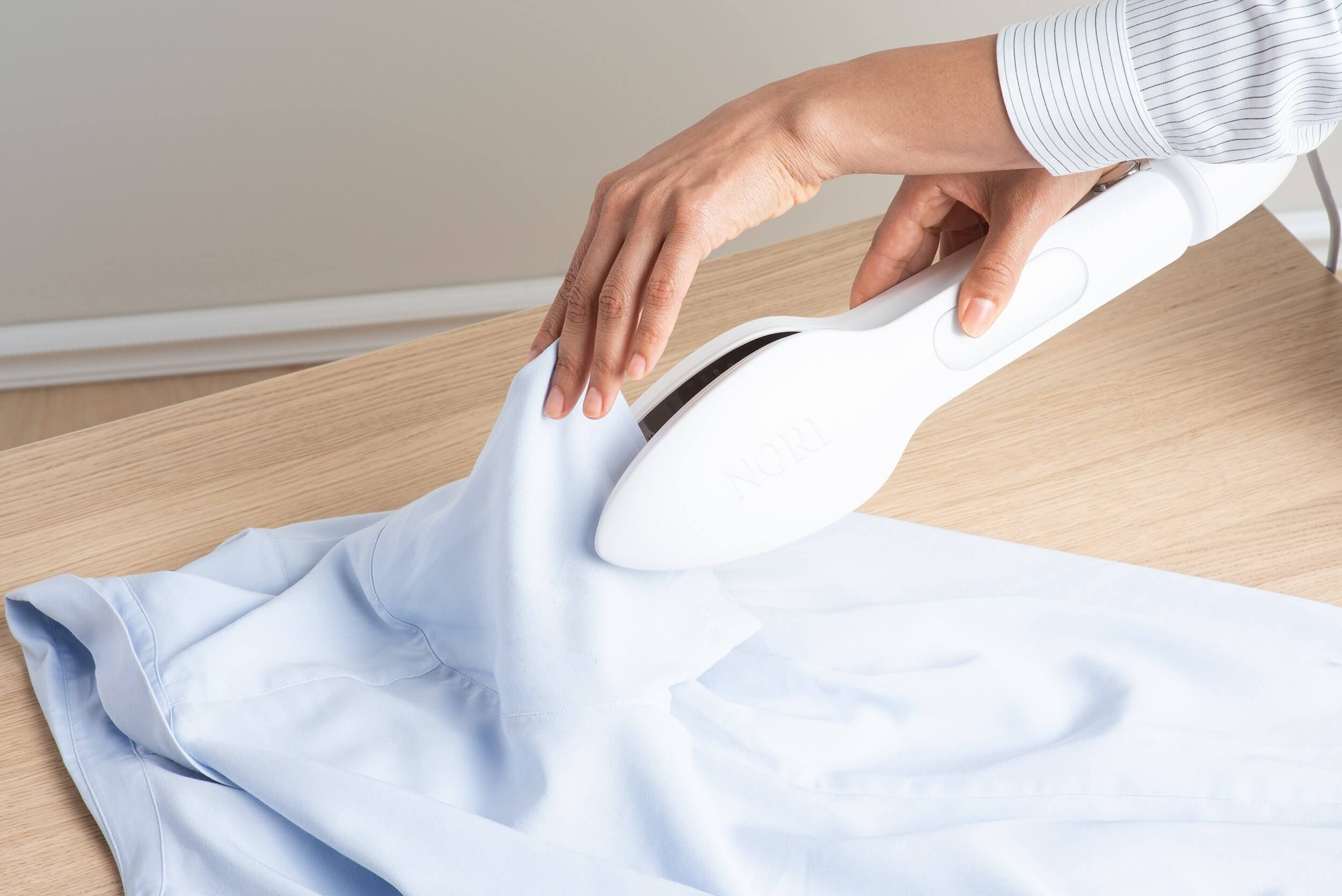
Ironing your clothes can often be a tedious, time-consuming, and major hassle of a task. Even though it's worth it in the end, it's so tempting to ditch the process and just wear your clothes as is. You might even think of just getting easy iron clothes to make it a lot simpler. The truth is, you can have all the clothes you want, as long as you know how to iron properly.
Before you call it quits, there may be some helpful information out there that can make ironing easier, more efficient, and overall less dreadful.
Ready to turn all your clothes into easy iron clothes? Read on to learn about our favorite tips and tricks for easier ironing without all the fuss!
Attention: Use discount code "SHOP10" at checkout to save 10% on The Nori Press!
What's the Fuss About?
Whether you’re a regular or occasional clothing iron-user, you’re probably familiar with the challenges that present themselves in the process.
Some challenges are unique to the type of iron you’re using. For example, with steam irons, you run into issues such as spotting and mineral buildup due to the steam. Alongside these challenges are several others that make ironing a task that people are less than enthusiastic about.
One of the most common challenges has to do with the wrinkles and creases not coming out, no matter how hard you press with the iron. You could be standing there going at it for what feels like forever and yet have nothing to show for it.
Similarly, many people struggle with removing wrinkles from the hard-to-reach areas of their clothing. Not to mention, while you’re tackling those stubborn wrinkles, the clothes keep sticking to the soleplate and could even be left with unpleasant scorch marks after the process.
These challenges make for an ironing experience so bad that many have opted for alternatives to ironing that can still get them a wrinkle-free look. However good they may be, those alternatives just don’t have the same appearance as freshly ironed clothing.
While there’s nothing wrong with alternatives to ironing, we’re up for a challenge to find the best ironing hacks to make the experience as easy and efficient as possible.
Fresh Fabric Without the Fuss
Chores aren’t exactly on our vacation bucket list. However, we’re coming in with some hot and fresh ironing hacks on how to make ironing, dare we say, actually enjoyable?
Here, we highlight some of the best tips for getting rid of the fuss and making ironing an easier process altogether!
Clean the Iron
Just like with any other appliance, it's important to clean your clothing iron, yet so many people neglect to do so. This can result in some of the challenges we listed earlier, such as mineral buildup, spotting, the sticking of clothing to the iron, and more.
When the soleplate of your iron isn't cleaned regularly, melted fibers and sticky stain starch can form and cause stains and snags within your clothes. You can easily remove any starch, dirt, and other residues with either a dry or damp all-cotton cloth. Similarly, with steam irons, you can clean the vents with a cloth or Q-tip.
Avoid Overdrying, Use a Spray Bottle
If you understand the basics of how ironing works, you’ll know why it’s best to have some moisture in your clothing, ideally when they are slightly damp, in order to get rid of wrinkles.
The way that ironing works is through heat and pressure. The appliance stretches the fibers of the clothing, which then holds a new shape once dried. Water helps to loosen the molecular ties in the fibers and thus makes the “stretching” much easier.
So if your clothes aren’t wrinkle-free by the end of the ironing process, the issue might not be how much pressure you’re applying or how hot the appliance is. Ironing dry or overly dry clothing can be difficult because they are resistant to reshaping (aka, ironing).
It’s best to iron your clothes after they’ve been line-dried or while they’re fresh out of the dryer (so long as they were dried for a shorter amount of time to ensure they’re still damp). If you find that the clothes are still too dry, add some additional moisture by spritzing some water on them. Some irons come with a spray function, but a regular spray bottle that you have lying around at home can work just as well to relax the fabric and remove the wrinkles with ease.
Steam irons are usually better at working out stubborn wrinkles since steam is the natural kryptonite for fabric wrinkles and creases. Not to mention, they can double as a dry iron for when you need it. The Nori Press, for example, is designed to press, steam, and refresh your clothes with ease. It comes with a steam reservoir, too, that allows for controlled steam release, which removes wrinkles more efficiently while also preventing spitting and leaking of water.
Use Distilled Water in Your Steam Iron
For those of you who own a steam iron, what type of water do you use to fill your water tank? In some cases, that could be one of the causes of some of your ironing challenges.
If you have hard water, the minerals in it may cause issues within your iron. Most clothing irons today are able to handle tap water better than older models. However, some, such as the Nori Press recommend the use of distilled water.
Alternatively, with the Nori Press, you can use the Fabric Facial in the water tank in lieu of distilled water (which is especially great if you have hard water). This product aids in wrinkle removal and, with its deodorizing capabilities, leaves your clothes with a nice, subtle fragrance.
Iron In Order From Delicates to Heavyweights
Believe it or not, the order that you iron your clothes makes a huge difference in the efficiency of removing wrinkles and the prevention of stains.
The general rule that you should follow is always iron your delicate, less wrinkled clothes first, and finish off with the heavyweight fabrics that have more wrinkles. As mentioned earlier, ironing is the stretching of fibers within the fabric to remove wrinkles. So if your fabric is thicker and has more wrinkles, you’ll need the iron to be at a much higher setting than while you’re ironing delicates with fewer wrinkles. When you iron shirts, ensure you use the right techniques and tools to achieve a wrinkle-free finish.
Similarly, it takes a lot more time for iron temperatures to go down than go up. Because of this, it’s much more efficient, time-saving, and less damaging to iron clothing that requires lower temperatures first, followed by the ones that need higher temperatures.
Some clothing irons even come with temperature settings. For example, the Nori Press has six fabric-specific heat settings: poly, silk, wool, cotton, denim, and linen. This makes it even easier to figure out which order you should iron your clothes in.
Say No to Circles and Yes to Long Strokes
It’s not enough to just plop the iron down on your clothes and smooth it over in random strokes with hardly any consistency. More than likely, this is why your wrinkles just don’t seem to go away.
When you iron pants, start from the back to the front and from the bottom to the top to avoid stretching the fabric.
If you’re someone who irons in circles, stop right there. Using circular motions can scratch the fabric. With this method, people usually end up sticking to one area for too long and thus stretching the fabric out in a way that can ruin the fit of the clothes.
The key to getting all those stubborn creases out more efficiently is to use long, straight, parallel strokes in one direction, as it doesn’t damage the fabric. Instead, these movements prompt you to smooth out creases all over the fabric. It may take more time, but it’s better than spending the same amount of time and getting zero positive results. As they say, work smarter, not harder!
Another great technique to use in accompaniment with the long strokes is the “Outside rule.” That is, start from the sides of your clothing and work your way to the center. This not only gets wrinkles out better but prevents the creation of difficult ones (which occurs when you start from the center).
Don't Overdo It When You Iron Clothes
Last but not least, ironing your clothes over and over again might actually do more harm than good. It's best to go slow and be efficient rather than fast and repetitive.
In order to get the best results, it's also important to keep your clothing taute while you iron by grasping the bottom of the fabric and gently pulling. For thicker and heavy fabrics, it's useful to turn the clothing inside out and steam both sides since steam might otherwise not penetrate through the fabric.
With any traditional iron, you would need to iron one side on top of an ironing board, then flip it over to do the other side. The Nori Press, however, can do all of this without a board and in fewer steps.
Inspired by the modern hair straightener, the Nori is shaped much like this hair- flattening beauty product and comes with two aluminum plates that can iron both sides of your clothing simultaneously. Not only does that save you time and space, but it's also significantly more efficient in removing all creases.
Preparing for Ironing
Before diving into the actual ironing process, it’s essential to prepare properly. A well-organized setup can make a world of difference, turning a potentially frustrating task into a smooth and efficient one. Here are some key steps to get you started on the right foot.
Setting Up Your Ironing Station
To ensure a smooth and efficient ironing experience, it’s essential to set up your ironing station properly. Start by choosing a flat and stable surface, such as an ironing board or a sturdy table. Cover the surface with a heat-resistant ironing board cover or a thick towel to protect it from scorching. Make sure the ironing board is at a comfortable height to avoid straining your back. If you’re using an ironing board, consider investing in one with a built-in iron rest to keep your hot iron safe and within reach.
Essential Ironing Tools
Having the right ironing tools can make a big difference in the quality of your ironing. Here are some essential tools to have in your ironing arsenal:
A Good Quality Steam Iron: A steam iron is a must-have for ironing clothes. It helps to remove wrinkles and creases quickly and efficiently.
Ironing Board: An ironing board provides a stable and heat-resistant surface for ironing.
Spray Bottle: A spray bottle filled with water can be used to dampen clothes before ironing, making it easier to remove wrinkles.
Ironing Cloth: An ironing cloth can be used to protect delicate fabrics from scorching and to help remove wrinkles.
Ironing Gloves: Ironing gloves can protect your hands from burns and scorching.
Ironing With Ease: Tips for Your Ironing Board
With all of these tips and tricks used in cumulation, you’re guaranteed to have a hassle-free ironing experience that removes all wrinkles and creases with ease. Whether you’re ironing a few items or a full load, you don’t have to dread ironing anymore–easier ironing has never been better (or more fun)!
Ironing Safety Precautions
Ironing can be a hazardous activity, especially if you’re not careful. Here are some essential safety precautions to take:
Always unplug the iron when not in use to avoid accidents.
Keep the iron out of reach of children and pets to avoid burns and scorching.
Use a heat-resistant ironing board cover or towel to protect your surface from scorching.
Never leave a hot iron unattended or lying flat on the ironing board.
Always use a steam iron with caution, as the steam can cause burns.
Avoiding Ironing Errors
Ironing errors can be frustrating and time-consuming to fix. Here are some common ironing errors to avoid:
Ironing Clothes That Are Too Hot or Too Cold: Always check the care label to ensure you’re using the right temperature for the fabric.
Ironing Clothes That Are Too Wrinkled: Try to iron clothes as soon as possible after they come out of the dryer to avoid wrinkles.
Ironing Clothes With Too Much Pressure: Apply gentle pressure to avoid scorching or damaging the fabric.
Ironing Clothes With the Wrong Ironing Tool: Use a steam iron for most fabrics, but use a dry iron for delicate or synthetic fabrics.
By following these tips and precautions for easy iron clothes, you can ensure a safe and efficient ironing experience. Just don't forget to get your Nori Press for a seamless ironing experience. Shop now!
Sources:
What’s The Science Behind Hair Straighteners/Curlers? | Science ABC
How to Clean an Iron | The Spruce
Removing Iron Scorch Marks | Good Housekeeping

